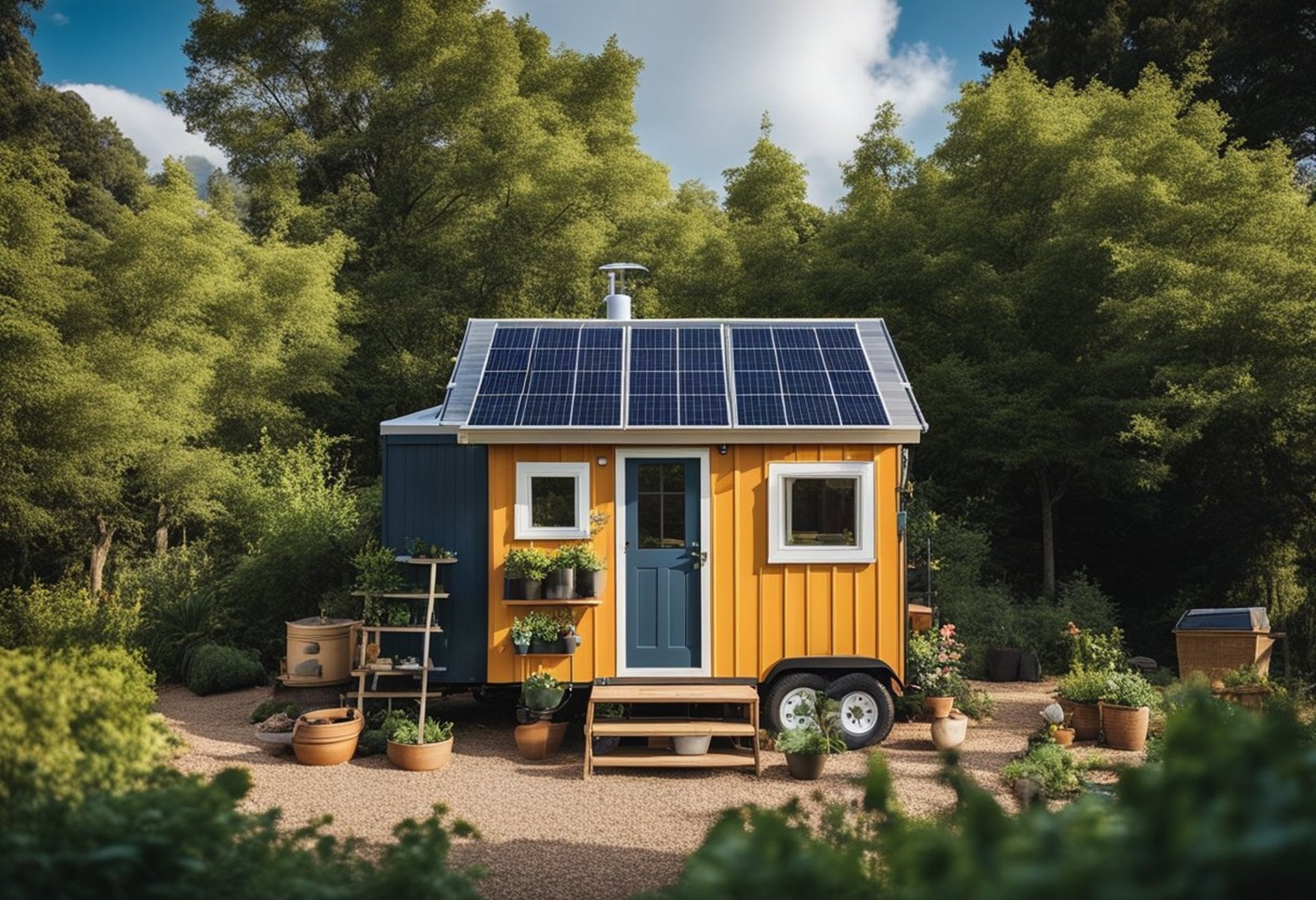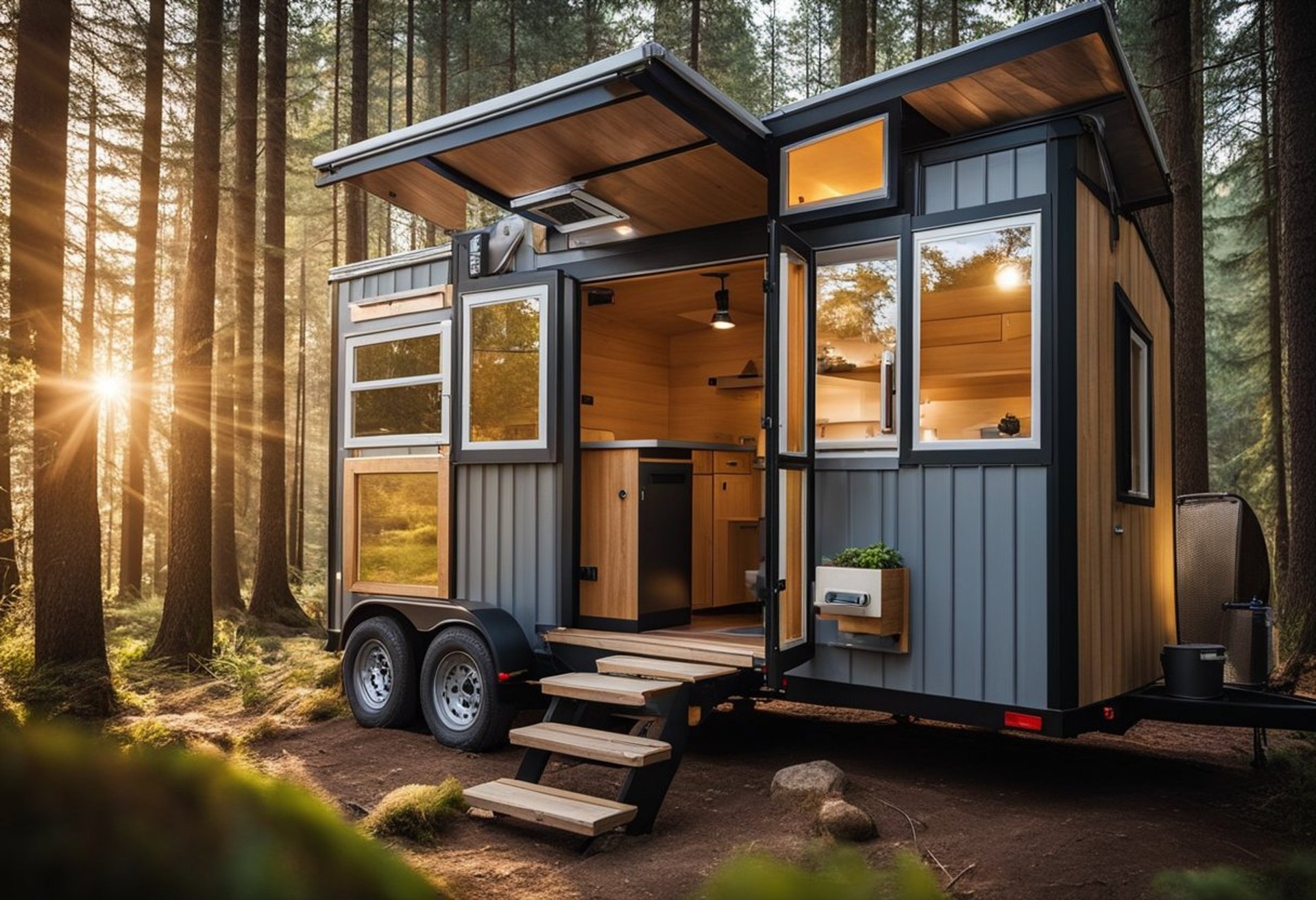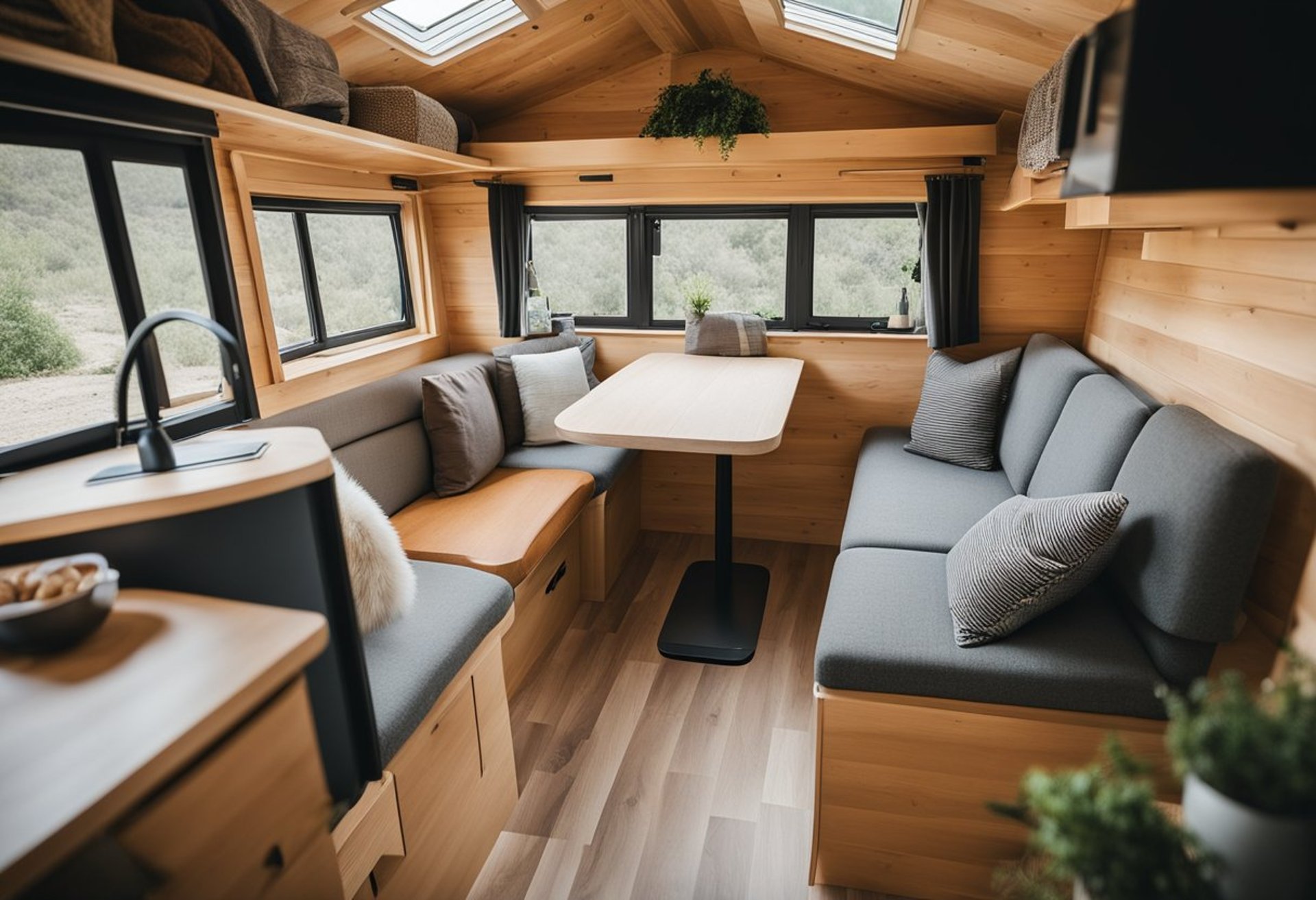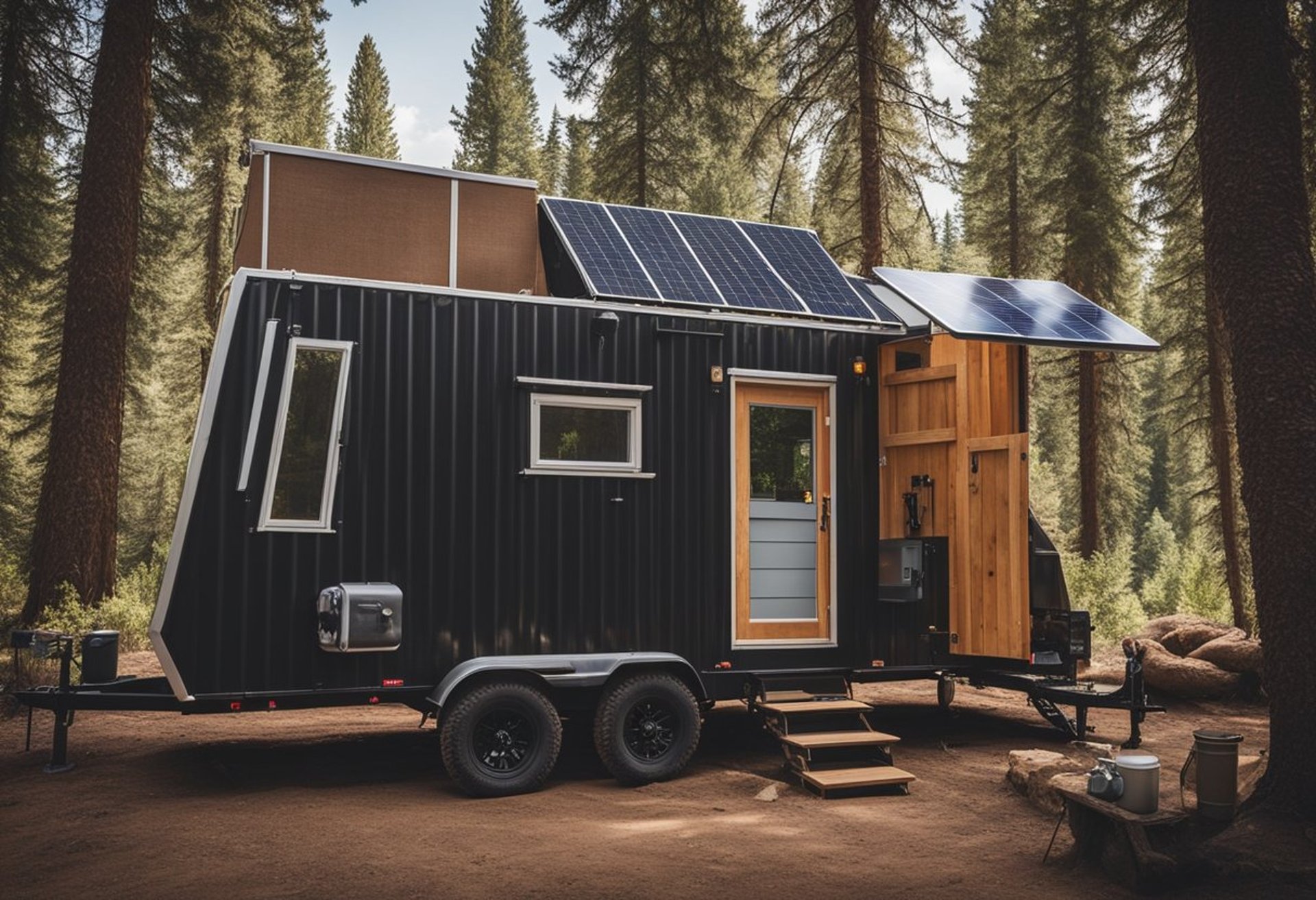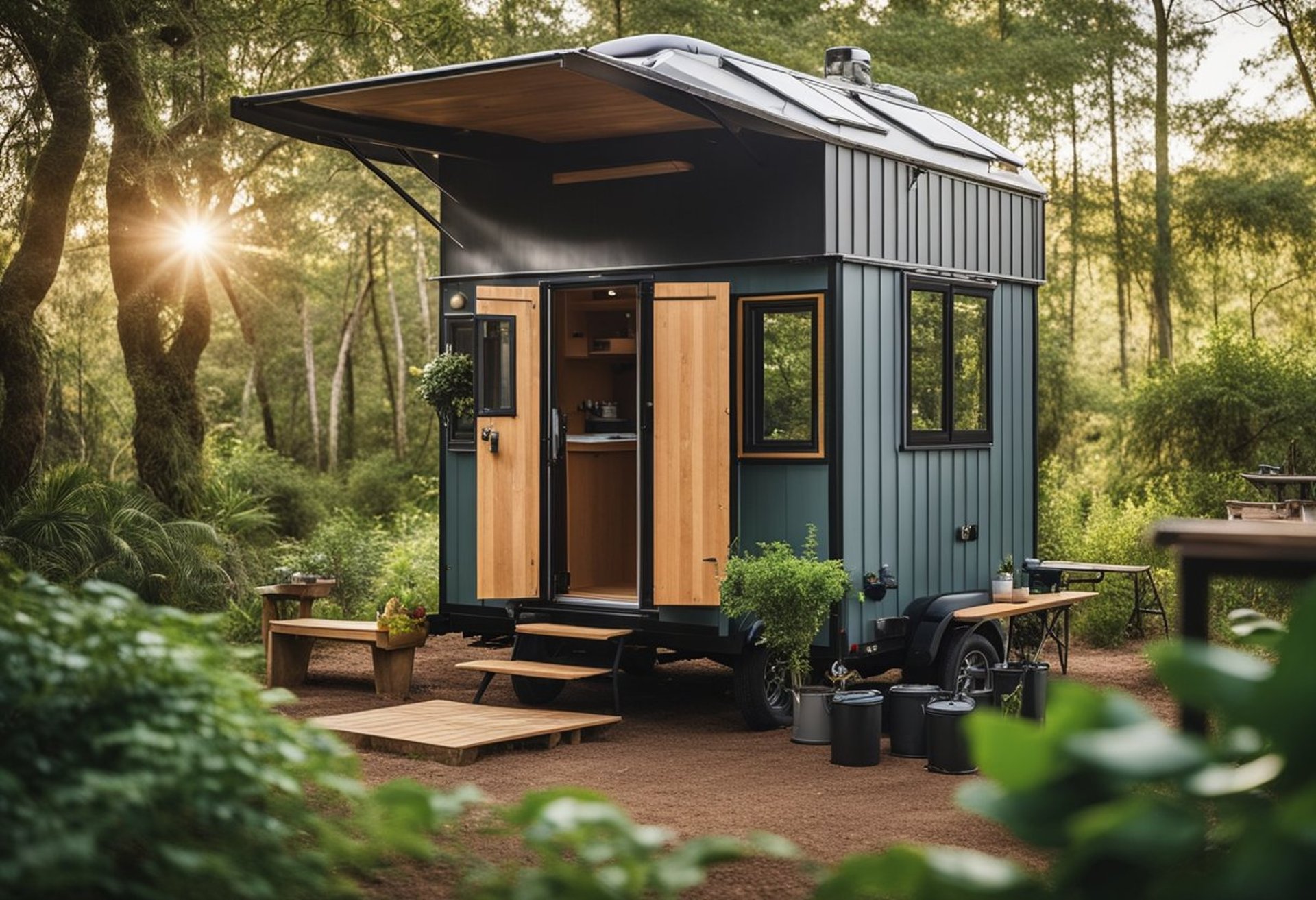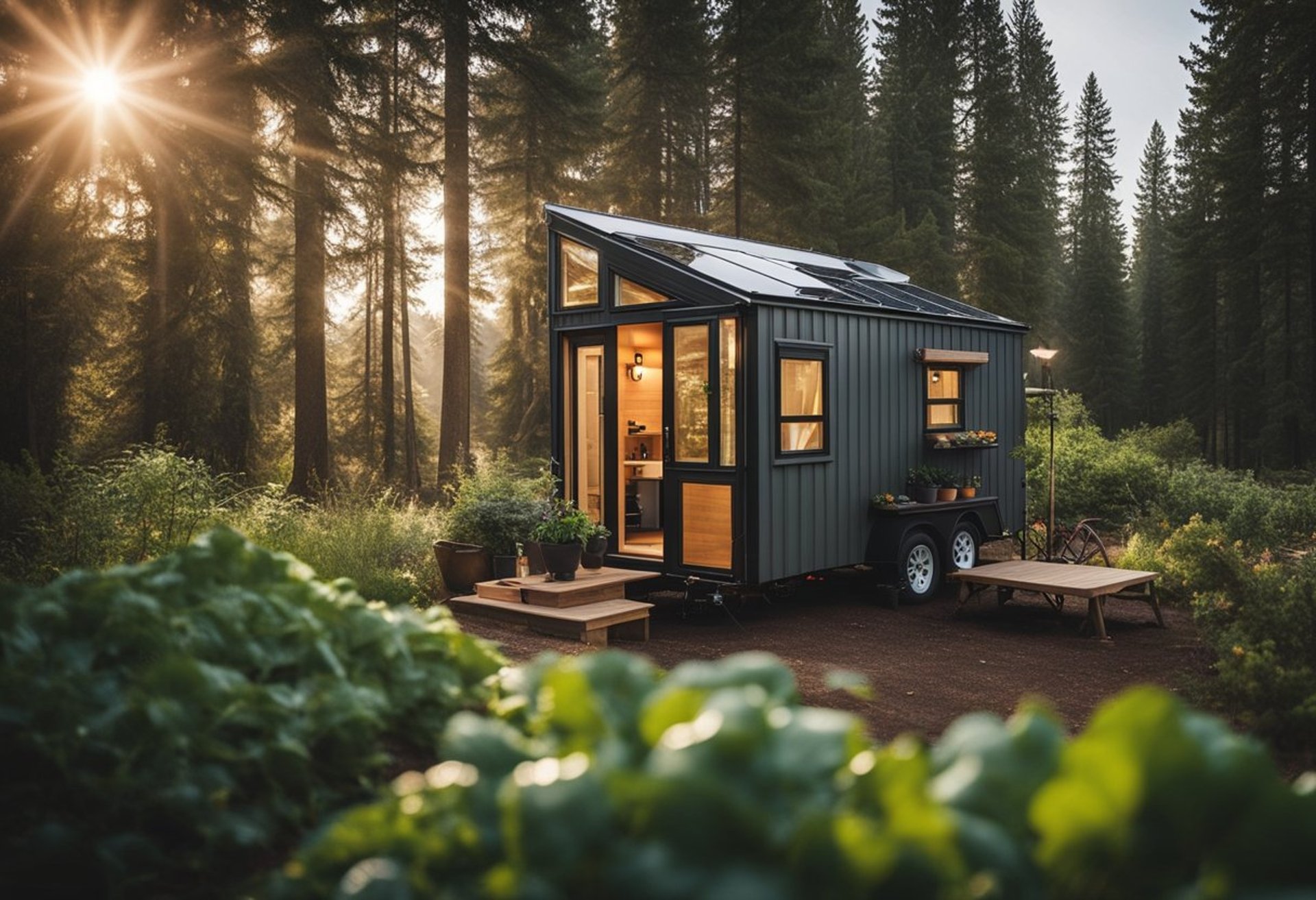Tips for Off-Grid Living in Tiny House Campers: Essential Strategies for Sustainable Lifestyles
Off-the-grid living has become an attractive lifestyle choice for many seeking simplicity and sustainability. Tiny cabins designed for off-the-grid living offer a compact and efficient way to escape the pressures of modern life while staying connected to nature. These small structures provide the essential comforts needed for a self-sufficient life while minimizing environmental impact.
Those entering the world of tiny house living must consider various key elements, from selecting the right camper with essential off-grid systems to creating efficient interior designs. By focusing on practical solutions for climate control and insulation, individuals can maintain a cozy environment regardless of the weather.
The move towards sustainable living practices ensures an eco-friendly approach, benefiting both the individual and the environment. Embracing this lifestyle can be fulfilling and offers the chance to create a personal sanctuary away from the bustle of modern life.
Key Takeaways
Choosing the right camper is vital for off-grid functionality.
Efficient design maximizes space and comfort.
Sustainable practices enhance both living quality and environmental impact.
Selecting Your Tiny House Camper
Choosing the right tiny house camper is crucial for successful off-grid living. Several factors play an important role, including size, capabilities, mobility, and legal considerations.
Assessing Size and Space Needs
When assessing size, it is vital to consider the intended use and duration of stay. Factors like the number of occupants and storage requirements should guide the decision.
A common range for tiny house campers is between 100 to 400 square feet. He or she should evaluate living spaces, kitchen areas, and bathroom layouts to ensure comfort.
A well-thought-out design maximizes functionality. Multi-purpose furniture can assist in saving space. Prioritizing essential items can lead to a more organized and efficient living environment.
Understanding Off-Grid Capabilities
Off-grid capability is essential for a tiny house camper. It ensures independence from utilities, which is vital for remote living.
Key features to look for include solar panels for energy needs, water purification systems, and composting toilets. These elements contribute to sustainable living.
Battery storage for solar energy allows flexibility in usage. Proper insulation also plays a role in energy efficiency, keeping the camper warm in winter and cool in summer.
Each camper should be assessed for its specific power and water supply options. A self-sufficient design will enhance the off-grid experience significantly.
Considering Mobility and Legalities
Mobility is a significant aspect of tiny house campers. A lighter, more compact design can enhance travel options and ease of towing.
Researching local regulations is crucial, as zoning laws dictate where tiny houses can be parked or lived. Some areas may have restrictions on size or usage, so potential owners should inform themselves before purchasing.
It is wise to check the camper's weight and size in relation to vehicle towing capacities. Registration and insurance also require special attention to comply with state laws.
Focusing on these factors ensures a functional and legally compliant living experience.
Essential Off-Grid Systems
An off-grid lifestyle in tiny house campers requires efficient systems to manage power, water, and waste. These essential systems ensure a self-sufficient and sustainable living experience.
Solar Power Setup
A reliable solar power setup comprises solar panels, a charge controller, batteries, and an inverter. Solar panels convert sunlight into electricity. Choosing the right capacity depends on energy needs, typically ranging from 200 to 800 watts for tiny house campers.
The charge controller regulates the energy flow to prevent battery overcharging. Batteries store excess energy for nighttime use, while inverters convert DC power to AC power for household appliances.
Regular maintenance of these systems maximizes efficiency and longevity. Clean the panels periodically and check connections for corrosion. Investing in high-quality components is crucial for consistent power generation.
Water Collection and Filtration
Water collection systems often include rainwater harvesting and storage tanks. Tin campers can use gutters and downspouts to channel rain into barrels. A minimum capacity of 100 gallons is recommended to ensure a sufficient supply during dry periods.
Once collected, water undergoes filtration to remove contaminants. Systems can include sediment filters, activated carbon filters, and UV sterilization. This combination ensures clean, safe drinking water.
Regular inspection and maintenance are required for all water systems. Checking for leaks in storage tanks and ensuring filters are replaced as needed contribute to reliable water access.
Waste Management Solutions
Effective waste management is crucial in a tiny house camper environment. Composting toilets are a popular choice, converting human waste into compost using natural processes. This system minimizes water usage and is environmentally friendly.
Additionally, gray water systems handle wastewater from sinks and showers. These can be diverted for irrigation or filtration before release. Implementing a simple setup with a storage tank and a pump can reuse water efficiently.
Regular maintenance ensures the waste systems operate correctly, preventing unpleasant odors or blockages. Keeping a routine check on compost levels and ensuring proper aeration are essential.
Interior Design for Efficiency
Efficient interior design is crucial for maximizing space and functionality in tiny house campers. By incorporating smart storage solutions and choosing versatile furnishings, one can enhance both usability and aesthetics.
Maximizing Storage Solutions
Storage plays a vital role in tiny house living. Utilizing vertical space with shelves that reach the ceiling can significantly increase storage capability. Consider adding modular shelving units that can be customized based on individual needs.
Storage Ideas:
Under-bed storage containers can keep seasonal items hidden yet accessible.
Built-in cabinets utilize otherwise wasted wall space.
Hooks and pegboards can hold gear and tools while keeping surfaces clear.
Using furniture with hidden compartments, like ottomans or benches, adds additional storage without sacrificing style.
Multipurpose Furnishings
Choosing multipurpose furnishings allows for greater efficiency. A Murphy bed can transform a bedroom into a living area during the day, maximizing the limited square footage.
Versatile Furniture Options:
Folding tables can be expanded for meals or workspaces, then stored away.
Sofa beds provide a sleeping area while serving as a comfortable seating option.
Nesting tables can adapt to various needs, offering flexibility in arrangement.
These choices not only save space but also create a visually appealing and functional environment. Clever design contributes to a harmonious atmosphere, enhancing the off-grid living experience.
Climate Control and Insulation
Effective climate control and proper insulation are crucial for maintaining comfort in tiny house campers. The right techniques and systems can help regulate indoor temperatures, making off-grid living more enjoyable year-round.
Insulation Techniques
Insulation serves as the first line of defense against temperature fluctuations. Common materials used include:
Spray Foam: Offers high R-values and seals gaps effectively.
Fiberglass Batts: Cost-effective and widely available, suitable for walls and ceilings.
Rigid Foam Boards: Ideal for floors and exterior applications, providing solid insulation.
Placement is key. Insulating floors, ceilings, and walls significantly reduces heat transfer. Storing insulation in targeted areas, such as under beds or along walls, helps maximize space while improving efficiency. Homeowners should also consider using thermal curtains or insulated window coverings to minimize heat loss through glass.
Heating and Cooling Systems
Selecting the right heating and cooling systems is essential for comfort in tiny houses. Options include:
Propane Heaters: Efficient for small spaces, providing quick warmth but requiring ventilation.
Wood Stoves: A more sustainable option, offering warmth and an appealing aesthetic.
Portable Air Conditioners: Useful in hot climates, ensuring cooler air without permanent installation.
Solar-powered fans and vents promote air circulation while conserving energy. In colder climates, using heated mats or electric blankets can provide additional warmth. Proper system maintenance is necessary to ensure functionality and efficiency, extending the lifespan of the equipment.
Sustainable Living Practices
Sustainable living practices are essential for anyone choosing off-grid tiny house camper life. These practices enhance resource efficiency while minimizing environmental impact.
Energy Conservation
Energy efficiency is critical in tiny house campers due to limited power resources. Simple adjustments can significantly reduce energy consumption.
Key Strategies:
Use Solar Power: Install solar panels to harness renewable energy. This reduces reliance on fossil fuels and lowers electricity costs.
LED Lighting: Replace incandescent bulbs with LED lights. LEDs use up to 75% less energy and have a longer lifespan.
Energy-Efficient Appliances: Opt for appliances labeled as energy-efficient. These consume less electricity, making them suitable for compact living spaces.
Conducting regular energy audits helps identify areas for further improvement. Employing timers and smart plugs can also reduce energy waste from devices when not in use.
Water Usage Reduction
Efficient water management is vital in off-grid living. Adopting practices that minimize water waste ensures long-term sustainability.
Effective Approaches:
Low-Flow Fixtures: Install low-flow showerheads and faucets. These devices can reduce water usage by up to 50%.
Rainwater Harvesting: Collecting rainwater for non-potable uses, such as irrigation, reduces reliance on stored water supplies.
Greywater Recycling: Implement a greywater system to reuse water from sinks and showers for landscaping. This creates a closed-loop water system in the camper.
Monitoring water usage with a simple tracking system can encourage efficient habits. Small changes significantly reduce water consumption and protect local ecosystems.
Eco-Friendly Products and Materials
Selecting eco-friendly products greatly contributes to sustainability in tiny house campers. The choices made can influence both health and environmental impact.
Recommendations:
Natural Cleaning Supplies: Use biodegradable cleaners that minimize chemical exposure and environmental harm. Options like vinegar and baking soda are effective.
Sustainable Materials: Choose furnishings made from reclaimed wood or recycled materials. These reduce waste and lower demand for new resources.
Organic Bedding and Textiles: Select organic cotton or bamboo products that are free from harmful chemicals. This helps create a healthier living environment.
Consistent evaluation of product choices ensures alignment with sustainability goals. Investing in eco-friendly materials supports both personal health and the planet.









